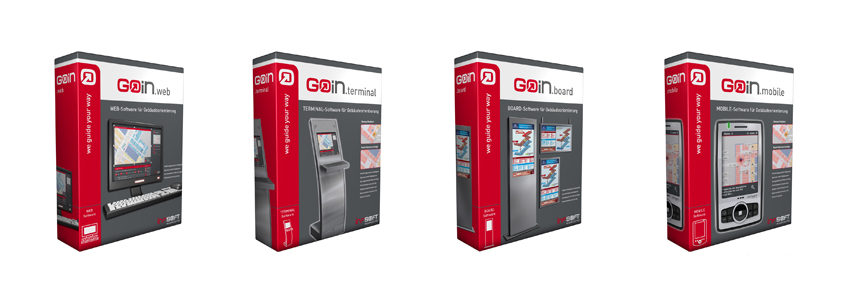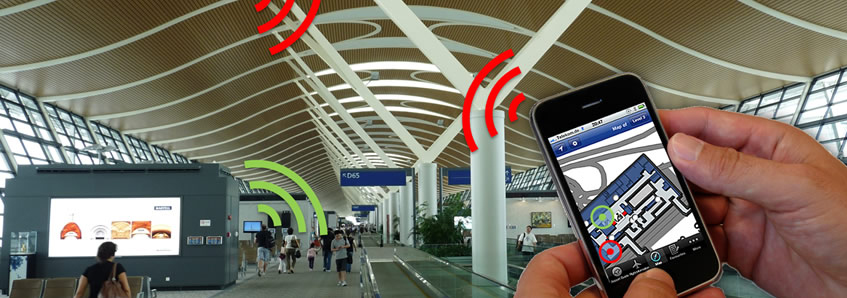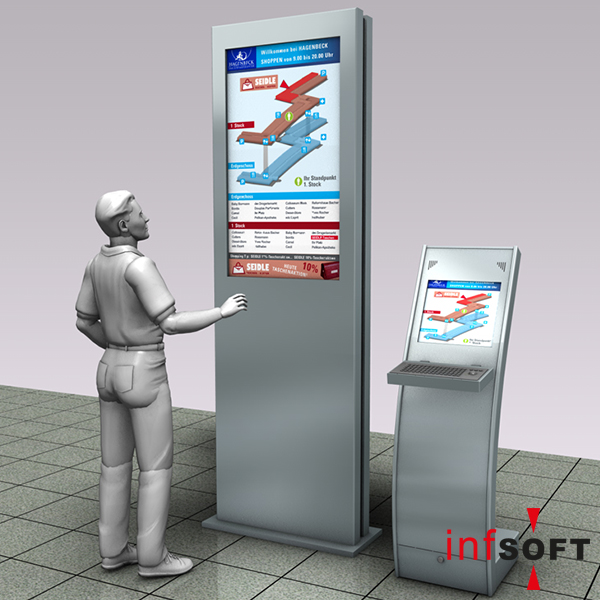In the year 2005, indoor navigation was still at the very beginning. Computer science student Tobias Donaubauer at that time developed a terminal solution for the university hospital Würzburg and founded his own company. We looked back and identified 10 milestones, which have characterized the indoor navigation industry over the past 10 years. What has been trendy, which techniques were the most promising ones and which ones have finally won through?
2005
- Terminal solutions were a common thing in public buildings. We developed a terminal for visitor guidance at university hospital Würzburg.
- Smartphones didn’t exist at that time. Thus, small Wi-Fi enabled tags had to be attached to people and objects, in order to determine their position. We called them „GOin.tag“.
2006
- At a time, when smartphones didn’t exist yet, many people owned a „personal digital assistant“ (PDA). Those devices didn’t have an internet connection, you couldn’t use them as phone and most of them ran on “Windows mobile”. Do you remember the small plastic pens which were necessary to work with them? We developed a mobile visitor guidance system for the Daimler plant in Sindelfingen.

2007
- Finally, the first iPhone was sold in November 2007 and made the smartphone suitable for mass use. It is hard to imagine today that it had no GPS receiver and no smartphone sensors such as magnetometer and accelerometer. But unlike its successors from iOS 4.3.x on, it was possible to detect its position with Wi-Fi. Nevertheless, positioning was roughly possible with the first iPhone generation: In outside areas via triangulation of mobile radio cells (accuracy 50 meters) and in inside and outside areas via interpretation of known Wi-Fi access points (accuracy 5-15 meters).
2008
- The iPhone 3G finally had a GPS receiver – which enabled exact positioning and navigation in the open air. Based on the iPhone, infsoft develops the “Lufthansa navigator” – our first smartphone app! Wi-Fi was used for positioning here. Ever-improving hardware has positive effect on user experience and positioning quality.
2009
- The iPhone 3GS had an integrated magnetometer. This sensor measures the strength and the orientation of the Earth’s magnetic field. A big step forward for indoor navigation!
2010
- The gyroscope and other sensors integrated into the iPhone 4 improve usability and allow virtual reality applications, which can also be used for indoor navigation.

2011
- In March, Apple introduces a new firmware, which no longer supports positioning via Wi-Fi. At the same time, apps for Android become more important because the operating system becomes more popular and doesn’t restrict positioning via Wi-Fi.
2012
- infsoft develops an individual positioning hardware (“Locator Nodes”) which allows server-based positioning of all devices.
2013
- iOS 7 comes with positioning via BLE – Apple introduces its proprietary standard iBeacon. infsoft picks up the technology, using it in smartphone applications and Locator Nodes.
2015
- Google presents its Eddystone beacons, infsoft’s solutions are compatible with.
- VLC (visible light communication) step by step reaches market maturity – we do research in this field and consider it very interesting for indoor positioning.
How can we summarize the development of the past 10 years? Wi-Fi remains an important positioning technology, even if it currently excludes Apple devices. The smartphone boom has revolutionized the whole industry. Beacons offer multiple possibilities and VLC is an interesting and accurate new technology which is on the rise. In complex buildings, it becomes more and more interesting to combine several techniques. Where will the journey be heading? Discuss with us – we’re on Facebook, Twitter, LinkedIn.







